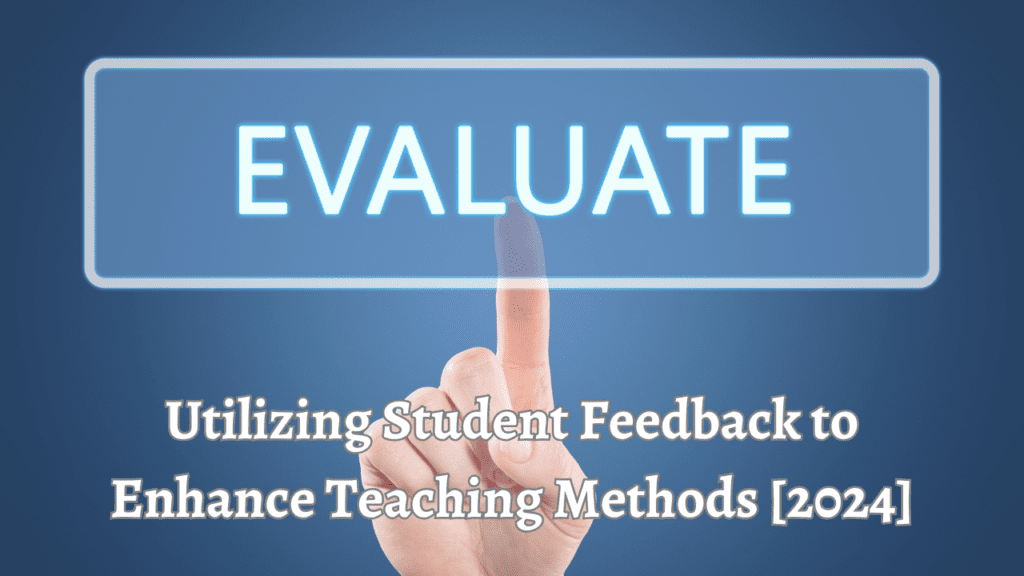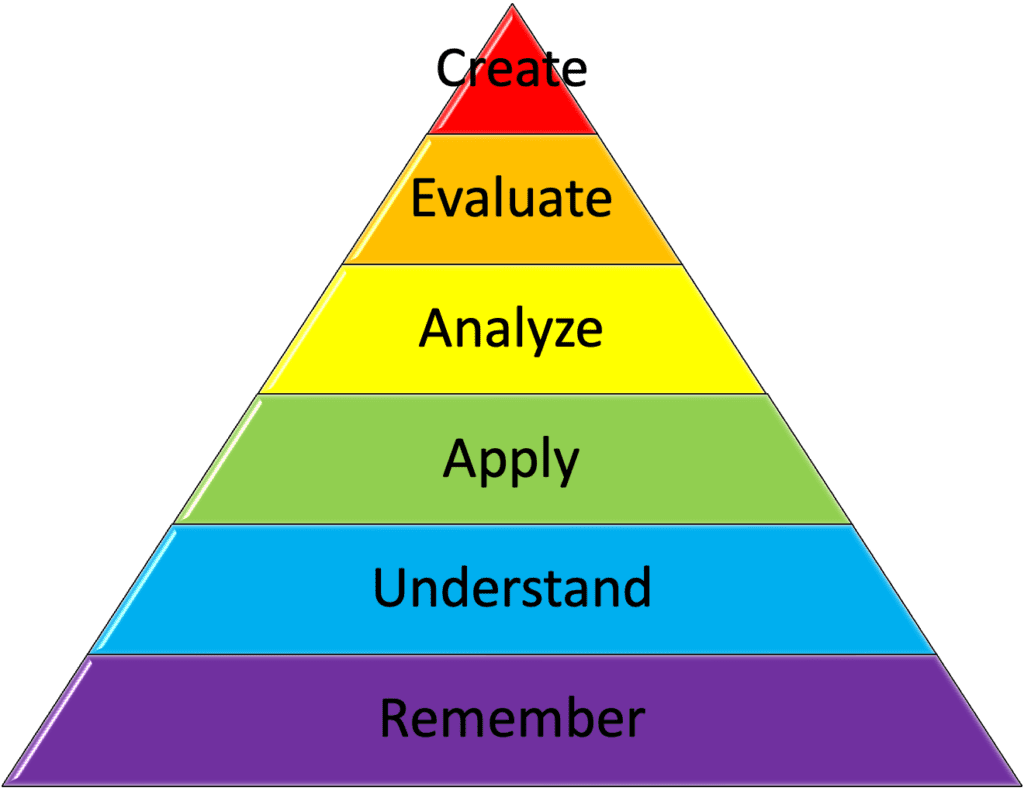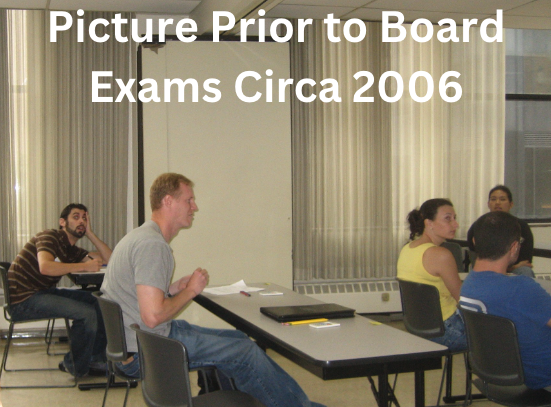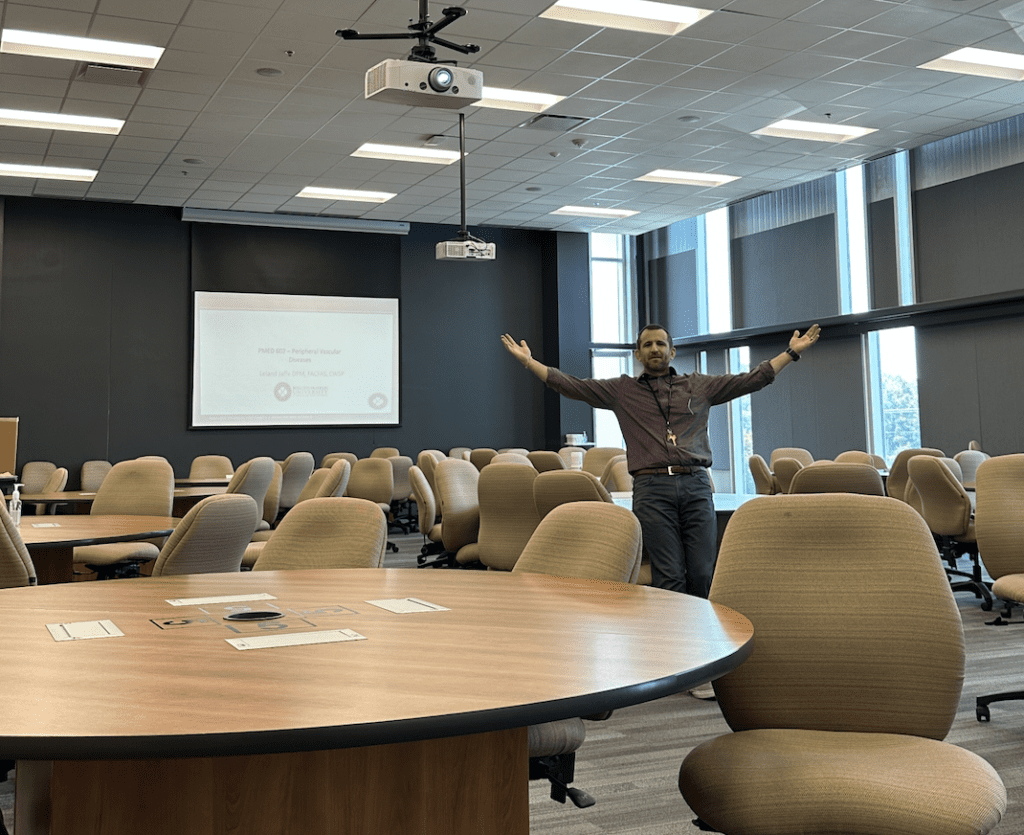Authored by Dr. Leland Jaffe; Associate Dean and Professor; Published on September 25, 2024
Student feedback continues to be a cornerstone for enhancing teaching methods and elevating the overall learning experience. Teachers who actively seek out and utilize student insights can adapt their instructional strategies to better meet the diverse needs of their classrooms.
This approach not only fosters a more inclusive learning environment but also helps improve student outcomes. By systematically incorporating student feedback, we can refine our techniques, ensuring that they remain effective and relevant in the face of evolving educational challenges.
The Importance of Student Feedback In Teaching
Gathering and utilizing student feedback is essential for any effective educational experience. This section will discuss how student feedback can enhance teaching effectiveness, improve student engagement, and build a collaborative learning environment.
Enhancing Teaching Effectiveness


Student feedback provides teachers with insights into what works and what doesn’t in their teaching methods. When students share their honest (and constructive) opinions, teachers can tailor their approaches to be more effective.
- Immediate Adjustments: Feedback allows instructors to make quick changes to their teaching strategies, making lessons more relevant and impactful.
- Identifying Strengths and Weaknesses: By understanding what students find helpful and challenging, teachers can emphasize their strengths and work on their weak areas.
Through continual feedback, the effectiveness of teaching methods can see substantial improvement. More information on this is here.
Improving Student Engagement
Responding to student feedback can significantly boost their engagement. When students see their input valued and implemented, they are more likely to participate actively in the learning process.
- Personalized Learning: Adjusting teaching methods based on feedback helps create a more personalized learning experience, keeping students interested and invested in their education.
- Fostering Ownership: When students feel heard, they take ownership of their education, which can lead to higher attendance and participation rates.
Find more insights on this topic here.
Building a Collaborative Learning Environment
Feedback plays a critical role in fostering a collaborative and inclusive classroom atmosphere. It opens channels of communication between students and teachers, encouraging a culture of mutual respect and continuous improvement.
- Encouraging Dialogue: Open feedback sessions can help create a dialogue where everyone feels comfortable sharing their thoughts and ideas.
- Peer Learning: When students see their feedback leading to changes, they become more collaborative, often helping each other understand difficult concepts and contributing to a supportive learning environment.
By integrating feedback, teachers can build a classroom culture that values every voice, making it a truly collaborative space. Learn more about creating such an environment here.
Methods for Collecting Student Feedback
Ensuring that educators have a robust understanding of student feedback methods is essential for continually enhancing teaching practices. The insights gathered from students can guide teachers in making informed decisions. Below are some effective methods of collecting student feedback.
1. Surveys and Questionnaires


Surveys and questionnaires are popular tools for gathering structured and constructive feedback from students. These methods allow teachers to collect data on various aspects of their teaching practices in a systematic and organized manner. Oftentimes, these course surveys are sent to and completed by students after a course has completed.
Benefits of surveys and questionnaires:
- Wide Reach: They can be easily distributed to large groups of students, giving teachers a broad perspective.
- Quantifiable Data: Responses can be easily quantified, making it simple to analyze trends and patterns.
- Cost-Effective: They are relatively inexpensive to create and distribute, especially when using online platforms.
Want to craft effective surveys? Check out SurveyMonkey’s guide on student surveys and Stanford’s tips on gathering student feedback.
2. Focus Groups
Focus groups provide an avenue for in-depth discussion and insights. These small, interactive sessions allow students to express their opinions on various teaching methods more openly.
Benefits and challenges of focus groups:
- Rich Qualitative Data: The group setting often encourages more detailed and candid responses.
- Interactive: Allows for dynamic discussions where ideas can be built upon.
- Time-Consuming: Organizing and conducting focus groups can be time-intensive.
- Potential Bias: Group dynamics might influence individual responses, potentially skewing the data.
Explore the advantages further by visiting Johns Hopkins University’s insights on focus groups.
3. One-on-One Interviews
Individual interviews offer a platform for collecting detailed, personalized feedback. These sessions can uncover specific insights that may not emerge through other methods.
Advantages of one-on-one interviews:
- Personalized Insights: Enable teachers to understand individual student needs and experiences deeply.
- Flexibility: Interviews can be tailored to explore specific topics in more detail.
- Resource Intensive: Require significant time and resources to conduct effectively.
4. Anonymous Feedback Channels
Anonymous feedback channels are crucial in encouraging students to share their honest thoughts without fear of repercussions. This method often yields the most candid and constructive feedback.
Importance of anonymous feedback:
- Honesty: Students are more likely to provide genuine and unfiltered feedback.
- Safety: Ensures that students do not fear retaliation or judgment from peers or teachers.
- Confidentiality: Protects the identity of respondents, fostering a trusting environment.
Learn more about leveraging anonymous feedback by reading Stanford’s guide on anonymous surveys and this article on the benefits and challenges of anonymous feedback.
By employing these methods, educators can collect diverse and valuable feedback from students, ensuring that the instructional strategies implemented resonate well with the classroom’s unique dynamics.
Analyzing and Interpreting Student Feedback


Effectively analyzing and interpreting student feedback is crucial for improving teaching methods. By understanding what students think about their learning experience, teachers can identify areas for improvement and adapt their strategies accordingly. This section outlines key approaches to analyze both quantitative and qualitative data and identify recurring themes and patterns in student feedback.
Qualitative Data Analysis
Qualitative data from interviews and open-ended survey responses offer in-depth insights into student perspectives. Analyzing this type of data involves identifying patterns and interpreting meanings.
Key techniques for qualitative data analysis include:
- Content Analysis: Examine responses to identify common words, phrases, or concepts.
- Coding: Assign labels to specific parts of the text to categorize and interpret data.
- Thematic Analysis: Identify and analyze themes that emerge from the data (more on this in the next subsection).
- Narrative Analysis: Understand and interpret the stories students share about their experiences.
For more techniques and a step-by-step approach, you can refer to this guide on qualitative data analysis.
Identifying Key Themes and Patterns
Identifying key themes and patterns in student feedback is essential for drawing meaningful conclusions. This process involves closely examining the data to find recurring topics that highlight important insights or areas for improvement.
Steps to identify themes and patterns:
- Read Through the Data: Familiarize yourself with the data by reading through it multiple times.
- Search for Themes: Group the codes into broader themes that capture significant patterns.
- Review Themes: Refine and review the themes to ensure they accurately represent the data.
- Define and Name Themes: Clearly define each theme and its relevance to the research question.
For a more detailed explanation of thematic analysis, you can refer to this step-by-step guide.
By following these methods and techniques for analyzing student feedback, teachers can uncover valuable insights that drive meaningful improvements in their teaching methods.
Implementing Changes Based on Feedback
Once student feedback has been collected and analyzed, the next step is to implement changes. This involves a structured process that ensures feedback is translated into tangible improvements or updates in teaching methods. Let’s explore the key aspects of effectively implementing these changes.
Developing Action Plans
Creating actionable plans based on student feedback requires a methodical approach. The goal is to address the issues raised by students and improve the overall learning experience.
- Identify Key Areas for Improvement: Start by pinpointing the main issues highlighted in the feedback. Focus on areas that have a significant impact on student learning.
- Set Clear Objectives: Define what you aim to achieve with the changes. Objectives should be Specific, Measurable, Achievable, Relevant, and Time-bound (SMART).
- Develop Strategies: Outline the steps needed to meet the objectives. This might include changes in teaching methods, introducing new resources, or modifying classroom management techniques.
- Allocate Resources: Determine the resources required to implement the strategies, such as materials, time, and personnel.
More detailed guidance on developing action plans can be found here.
Communicating Changes to Students
It’s important to communicate the changes to students effectively. This closes the feedback loop and shows students that their opinions are valued and taken seriously.
- Transparency: Be clear about what changes are being made and why. Transparency builds trust and encourages students to provide honest feedback in the future.
- Multi-Channel Communication: Use various platforms to inform students about the changes, such as classroom announcements, emails, or learning management systems.
- Engage Students: Create opportunities for students to discuss the changes and provide additional feedback. This can be done through class discussions or follow-up surveys.
By keeping communication open and transparent, you can foster a collaborative learning environment. For more strategies, visit this article.
Monitoring and Evaluating Impact
After implementing changes, it is essential to monitor their effectiveness and evaluate their impact on teaching and learning.


- Continuous Monitoring: Regularly check the progress of the implemented changes. This can be done through classroom observations, student performance assessments, and ongoing feedback collection.
- Data Analysis: Analyze the data to determine if the changes are meeting the established objectives. Look for improvements in student engagement, understanding, and performance.
- Adapt and Refine: If the changes are not effective, be willing to tweak the strategies. Continuous improvement should be the goal.
Implementing changes based on student feedback is a dynamic process that involves planning, communication, and continuous evaluation. By following these steps, educators can ensure that student feedback leads to meaningful improvements in the classroom.
Challenges and Considerations
Utilizing student feedback to improve teaching methods can be transformative, but it does come with its own set of challenges and considerations. Addressing these effectively ensures that the feedback process is productive and beneficial for both teachers and students.
Overcoming Reluctance to Give Feedback
Students may be hesitant to share their honest opinions due to fear of repercussions, embarrassment, or simply not feeling that their feedback will be taken seriously. To encourage students to provide honest and constructive feedback, consider the following strategies:
- Create a Safe Environment: Ensure students feel safe to express their thoughts without fear of negative consequences. Anonymous feedback mechanisms can be particularly effective.
- Educate on the Importance: Explain to students how their feedback helps improve their learning experience, making it clear that their voices matter.
- Incorporate Regular Feedback Sessions: Make feedback a regular part of the classroom routine, so students become accustomed to giving it frequently.
- Prompt Specific Feedback: Ask targeted questions to guide students toward providing useful, constructive feedback.
For more detailed strategies, check out this great resource.
Managing Negative Feedback
Negative feedback can be hard to swallow, but it’s an important component for growth and improvement. Handling negative feedback constructively involves a balanced and positive approach:
- Stay Open and Calm: Approach negative feedback with an open mind and avoid taking it personally. It’s about the method, not a personal attack.
- Seek Clarification: If feedback isn’t clear, ask for specific examples or suggestions to understand better what needs improvement.
- Act Professionally: Maintain a positive tone and show appreciation for the feedback. This models maturity and encourages a culture of respect.
- Reflect and Adapt: Use the feedback as a tool for self-reflection, identifying areas for growth, and making necessary adjustments.
Learn more about how to deal with negative feedback constructively here.
Ensuring Feedback Leads to Meaningful Change
The ultimate goal of gathering student feedback is to make meaningful changes that enhance teaching methods. To ensure this, it is essential to:
- Take Feedback Seriously: Demonstrate to students that their opinions are valued by actively listening and reflecting on their feedback.
- Implement Changes: Develop actionable plans based on student feedback and implement these changes in your teaching. Small adjustments can often have a significant impact.
- Communicate Outcomes: Inform students about the changes being made in response to their feedback, fostering a sense of collaboration and mutual respect.
- Follow-Up: Continue to collect feedback to assess the effectiveness of the changes and make further adjustments as needed.
For more insights into the importance of using feedback to improve teaching, visit this guide.
By addressing these challenges and considerations, educators can create a more responsive and effective learning environment that continually adapts to meet students’ needs.
Student Feedback in Teaching – Conclusion
Utilizing student feedback is pivotal in refining teaching methods and enhancing the overall educational experience. Incorporating feedback from surveys, focus groups, interviews, and anonymous channels provides educators with actionable insights. By analyzing both quantitative and qualitative data, teachers can identify key areas for improvement and develop effective strategies to address them. Implementing these changes and continuously monitoring their impact ensures that the teaching methods remain responsive and effective. Overcoming challenges such as reluctance to provide feedback and managing negative feedback with professionalism fosters a collaborative and improvement-focused classroom environment. Adopting these practices underscores a commitment to educational excellence and responsiveness to student needs.







